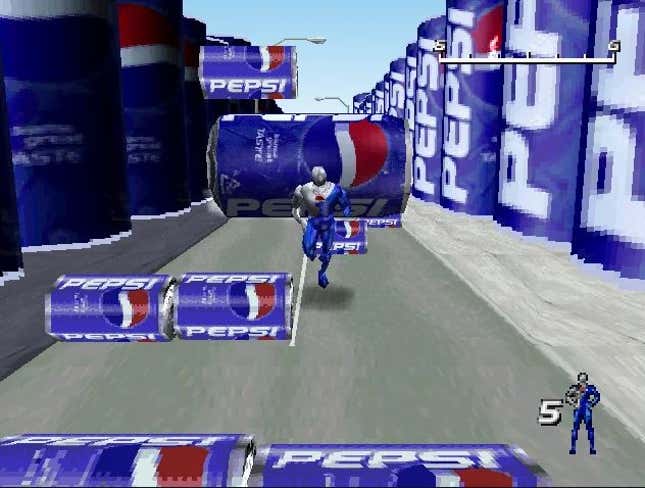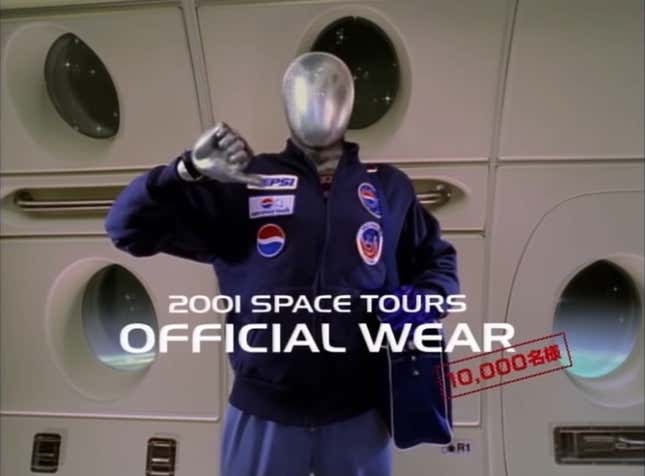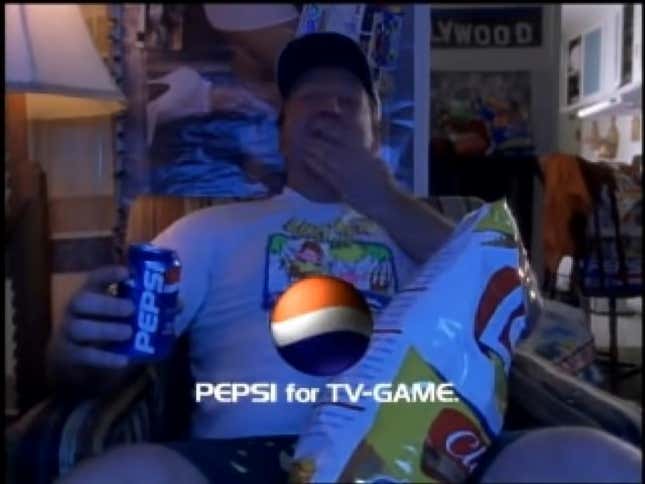America was culturally adrift in the 1990s. When the Cold War ended, it took a big piece of the nation’s identity with it. So it’s not shocking that, absent a real honest-to-goodness war for the first time in half a century, the most materialistic society in history dove headfirst into brand wars. Pizza wars. Burger wars. Console wars. None of these were as high profile as the Cola Wars between Coke and Pepsi. And, like most American wars, it got exported elsewhere.
Japan is one of the largest beverage markets in the world. In 1996, Pepsi made up three percent of all soft drink sales in Japan. Coca-Cola? Thirty-one percent. Half of all vending machines featured Coca-Cola products. Pepsi was up against it. It needed a miracle. It needed a hero. It needed Pepsiman.
The origin of a hero
Before there was Pepsiman, there was his creator, Takuya Onuki. An advertising mastermind, Onuki signed on to a seemingly impossible task: sell Pepsi to the Coke-guzzling Japanese. As recounted in the YouTube documentary The Secret History of Pepsiman, Onuki revealed in his book that the inspiration for Pepsiman came to him almost immediately. Soon after getting the assignment, he hit his local convenience store to experience Pepsi in real time. As he gazed at the shelf, he thought about the parameters of the Pepsi brand campaign— young, challenging, and American—in contrast with Coke’s traditional Japanese image. Coke was bigger than a brand in Japan; it was a whole color.
“The only cola is red Coca-Cola. Red Coca-Cola on bar signs. Red Coca-Cola on vending machines. Red Coca-Cola at McDonald’s. Since their childhoods Japanese people are completely programmed to think cola is just red Coca-Cola,” he wrote. “I had to make a commercial that made [Pepsi] popular…the talent has to be the product itself.”
Pepsiman was born. Onuki knew it wasn’t clever, but it was effective. You know right away what Pepsiman is all about. He’s a cool, anthropomorphized can of Pepsi. (He wears a chain!) His only dialogue is “Schwaaa!” a Japanese onomatopoeia for the sound a soda can makes when you crack it open. People are always thrilled to see him because, Onuki reasoned, “if Pepsiman is popular then the product will become popular.”
He was right.

The Rise of Pepsiman
Onuki’s vision for Pepsiman came to fruition, in part due to a partnership with legendary FX studio Industrial Light and Magic. Onuki and the Pepsi team launched an ad campaign featuring Pepsiman delivering refreshment to thirsty, hip Americans. Pepsiman was funny and self-deprecating, too, always enduring a slapstick injury after each delivery that would be modeled by a crumpled can at the end of each ad. Now that Pepsi had a resilient, lovable mascot with a killer theme song, sales soared. Soon, Pepsiman grew bigger than just TV ads. There was licensing afoot.
Pepsiman merch is a thing. There are watches and piggy banks and collectible bottle caps and backpacks. However, unlike most licensing deals which come packaged with a simple handbook of dos and don’ts from the parent company, all Pepsiman projects had to be approved by Onuki himself. He was a stickler for quality control and fine detail. For example, he insisted that all Pepsiman ads be shot on location in the U.S. It wasn’t cheap to set up production in New York, Los Angeles, Miami, and so on, but Onuki never compromised.

A Pepsiman video game may seem outrageous today, when successful studios with great ideas still get gutted, but advergames were all the rage in the 1990s. To give you some perspective, 7-Up’s Cool Spot mascot has not one, not two, but FOUR different games. Chester Cheetah, The Noid, Ronald McDonald and others had their own games, too. Pepsiman was going digital.
Pepsiman Meets PlayStation
Pepsiman released for PlayStation in Japan on March 4, 1999. A runner-style game developed by KID, it features the titular Pepsiman sprinting along various themed obstacle courses collecting cans of Pepsi. Come for the basic arcade action, but stay for the random humor. The entire package feels like an absurdist Adult Swim joint. The dialogue is in English with Japanese subtitles. The “story,” Pepsiman delivers Pepsi to people who need Pepsi, is accompanied by cutscenes of a fourth-wall-breaking American guy, played by actor Mike Butters, spectating the whole thing (while drinking copious amounts of Pepsi, of course.)

It was not a financial success. Reviews were meh. Some outlets praised the game for clearing an admittedly low bar, and others appreciated the odd but captivating energy Onuki had carefully crafted around all things Pepsiman. But the game never made it to the U.S., and Pepsiman was retired in 2003.
Like all great heroes, however, Pepsiman gets a redemption arc. Onuki’s decision to embrace America in his ad campaign proved to be a backstop against obscurity. In 2016, Pepsiman was included in the lineup for Summer Games Done Quick. The charity stream regularly draws millions of viewers, and theboyks’ 2016 run became so popular that GDQ brought Pepsiman back again and again. People loved the epileptic amount of advertising (most logos per second, according to Complex) and Butters’ non-sequitur cutscenes.
Pepsiman may have lost the Cola War, but he won our hearts forever.

